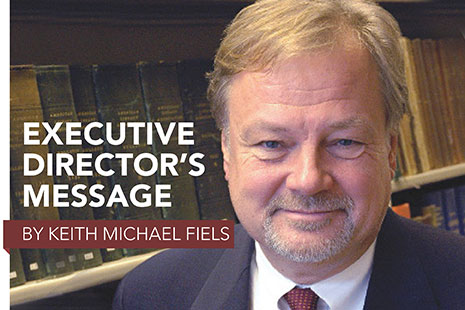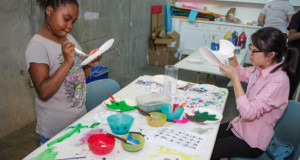
Over the last year and a half, we have been talking a lot with members about advocacy and the strategic direction of the Association for the coming years. In dozens of kitchen-table conversations, chapter forums, virtual town hall meetings; in conversations with divisions, round tables, committees, and affiliates; and in discussions with Council and the ALA-wide Planning and Budget Assembly, we have asked members to talk about their aspirations and vision for advocacy.
Throughout these conversations, members have consistently identified advocacy as one of the most important things the Association does. They have agreed that there is a need for a consistent message in our advocacy efforts. And, interestingly, they have told us that there is a need for a clearer common understanding of what we mean by advocacy.
That’s because, while everyone pretty much agrees that advocacy is important, there is not always agreement on exactly what we mean by advocacy. To one member, advocacy is federal legislation. To another, it is increasing public awareness of the value and impact of libraries. To another, it is the work involved in passing a local bond issue. As with the proverbial elephant, different people have different perspectives.
Last spring, I wrote about an emerging vision of advocacy, one that helps us better understand how the pieces fit together. In September, ALA President Courtney L. Young wrote about the need for advocacy and some of the many ways in which members could advocate as part of an advocacy “continuum.” This continuum reflects four interrelated components that support and amplify one another:
Laying the groundwork involves efforts that require long-term investment and yield long-term results. The Libraries Transforming Communities project provides training and tools that will allow thousands of libraries to reach out to their communities in new and creative ways, building long-term community support.
The new Center for the Future of Libraries and projects such as YALSA’s Future of Library Services for and with Teens help the public and decision makers see libraries as forward-thinking and innovative institutions.
The Campaign for America’s Libraries and such initiatives as the Declaration for the Right to Libraries increase public awareness of the positive impact of libraries of all types.
Research that documents the value and impact of libraries—such as the work of the Office for Research and Statistics, ACRL’s work on the Value of Academic Libraries, and PLA’s work on public library impact measures— helps us better make the case for strong support.
Turning support into action involves responding to community aspirations with forward-looking plans and building community coalitions to support these plans.
ALA’s Advocacy University provides virtual and face-to-face training, resources, and encouragement to thousands of librarians and library supporters each year.
PLA’s “Turning the Page Online” training program provides librarians, library staff, trustees, and supporters with the skills and confidence they need to advocate successfully on behalf of their libraries.
ALSC’s Everyday Advocacy helps librarians stay informed, engaged, and inspired; share their stories; and speak out. United for Libraries’ Citizens-Save-Libraries Power Guide for Successful Advocacy helps library supporters reach their local advocacy goals.
And YALSA’s Advocacy Benchmark tool helps supporters assess the current level of advocacy activity and identify strategies for even greater success and impact.
Advocating for specific goals involves the grassroots campaigns, legislation, and referenda that affect library services at the community, state, national, and international level. This includes the work of the ALA Washington Office and Committee on Legislation in tracking, developing, and securing legislation at the national level, as well as their work and that of the Chapter Relations Office on legislation at the state level. At the same time, we need to help advance local legislation and policies that will improve library and information services in individual counties and municipalities. Last, we need to work at the international level on policies and laws that affect library services on a global level, such as our work on copyright or library services to the blind and physically handicapped. In all of these instances, partners and coalitions are essential to success.
Responding to opportunities and threats is what needs to happen when a governor proposes the elimination of library funding statewide, when a mayor cuts a library budget, or when House leadership proposes elimination of federal funding for libraries. When a library or a state is fighting for its support, we need to be effective, and we need to be quick. When statewide library funding was threatened in Florida and New York, advocacy software provided by ALA helped library supporters move quickly to save state funding. In dozens of instances each year, ALA’s Office for Library Advocacy and the ALA president have provided support, media relations assistance, and even testimony when libraries are threatened, as they have been in Kentucky this past year.
The advocacy continuum represents a new vision of how the many groups involved in advocacy throughout the Association and library community all contribute to our overall impact as an association. In order to be successful, we must advocate across this entire spectrum.
It also shows that each of us, no matter what our job title, what type of library we work with, or whether we are extroverts or introverts, can help to build support for libraries and the people who make them work. In short, there’s a place for everyone!
As ALA President Courtney L.Young said in her message: “Won’t you please join me in becoming an active advocate? Let’s do it today.”

